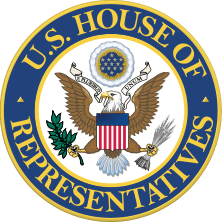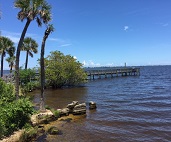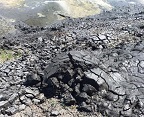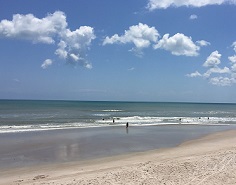Indian River Lagoon
|
Growing up around Cocoa Beach, raising my family along the Lagoon and working in local real estate for many years has helped me understand why it’s so important for us to work together to care for our environment. Our quality of life, economy and tourism, property values and the survival of many indigenous species of plant and wildlife depend on our efforts. Advancing common sense ideas that strengthen our economy, protect our Lagoon and preserve our natural beauty remains a top priority for me.
Funding the National Estuary Program and Fighting for More Resources More Resources for Our Lagoon: The National Estuary Program (NEP) was created by Congress in 1987 to protect and restore the water quality and ecological integrity of estuaries of national significance. Currently, 28 estuaries throughout our nation have been designated as estuaries of national significance. Because the NEP is an important component in maintaining our nation’s environmental treasures like the Indian River Lagoon, I co-authored bipartisan legislation which was signed into law to reauthorize and improve this program. Included in this legislation was my bipartisan plan to reprioritize existing federal funds so more money is available through competitive grants for estuaries with critical needs like our Lagoon.
Fighting Algal Blooms: Algae blooms, like the ones affecting the Indian River Lagoon, occur throughout the country and the world. Experts still have many questions about the root causes and how to fight them and related hypoxia events. I partnered with Rep. Suzanne Bonamici (OR) to get important algal bloom research legislation through the House and to the President’s desk. The bill reauthorized research grants to look at the prevention, causes, and mitigation of algal blooms like the ones in our Lagoon. Bipartisan Caucus Gives Our Estuaries a Strong Voice in Congress Educating Congress and Raising Awareness: Last year we worked to establish the first bipartisan Congressional Estuary Caucus to help educate Members of Congress and leaders at all levels of government about the importance of our nation’s estuaries, support the National Estuary Program and help give a strong voice in Congress to our Indian River Lagoon and other environmental treasures. So far forty Members of Congress have joined Congressional Estuary Caucus, and the Caucus has held eleven successful briefings with national experts examining topics such as algal blooms, coastal resiliency and living shorelines. We’ve also heard presentations from local leaders such as Lynda Weatherman of the Space Coast EDC, Dr. Duane Defreese of the Indian River Lagoon Council, Dr. Tristan Fiedler and Dr. John Trefry from the Florida Institute of Technology, and Laurilee Thompson, co-owner of Dixie Crossroads and a member of the Brevard County Environmentally Endangered Lands Committee. You can find out more about the Congressional Estuary Caucus by visiting www.posey.house.gov/estuaries/. Update on Dredging, Muck Removal and Everglades Restoration Efforts
This past spring dredging began in Mims and is continuing. Dredging in Turkey Creek (Palm Bay) is coming to a close. Hurricane Irma caused additional muck deposition which required additional dredging. In total 200,000 cubic yards of muck or 11,000 dump trucks were removed and this dredged material is being taken to the western Brevard and tilled into agricultural land. The City of Cocoa Beach is dredging residential canals and parts of the Lagoon located near those canals. This project is partially funded by the state and the Save Our IR Lagoon half cent sales tax. Other dredging projects that have undergone the permitting process and are targeted to begin next year. Everglades Restoration Projects: Over the long term redirecting Lake Okeechobee’s overflow away from the Indian River Lagoon will help improve the Lagoon’s health while also naturally filtering this water. In Congress I have been supportive of projects like repairing the Hoover Dike to help alleviate discharges of nutrient laden water into the St. Lucie River and the Lagoon, advancing the Ten Mile Creek Preserve Restoration which will treat storm water run-off before it reaches the Lagoon and funding the Comprehensive Everglades Restoration Plan. Protecting our Beaches, Coastal Communities and Marine Life Beach Re-Nourishment: While restoring our Lagoon is critical, there is more we can do to ensure our environmental treasures are protected. Maintaining our beaches and shores is necessary to promoting tourism and supporting marine life. Our beaches are also the first line of defense against threats posed by hurricanes and other major storms. That’s why my office worked with the Army Corps of Engineers to make Mid Reach Beach re-nourishment efforts a top priority in their FY2018 Work Plan. In total $28.375 million for the Brevard County Mid Reach beach. This project will help protect our coastal infrastructure and communities from severe damage caused by erosion and flooding.
We need to work together and collaborative efforts by individuals and local, state and federal governments are essential to safeguarding our environment. Some of these partnerships like the Prescott Marine Mammal Rescue Program which receives partial funding through the EPA have been in jeopardy for many years. It’s common to read stories about stranded manatees and other wildlife in our waterways. Time is of the essence to rescue these creatures. That’s why every year I have successfully fought to restore proposed funding cuts for this program. Addressing Water Quality: Because estuaries like our Lagoon are places where fresh water mixes with salt water from the oceans, preserving the delicate balance of nature is necessary but can also be challenging. I recently introduced bipartisan legislation to study and monitor the effects of coastal acidification and worked to get additional funding for the Indian River Lagoon to monitor and enhance water quality. |









